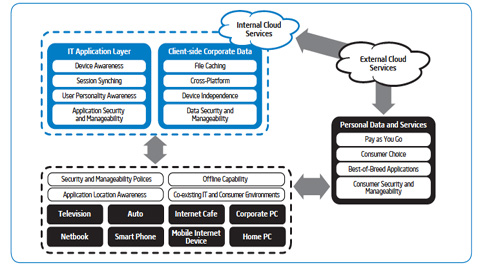Enabling Device-Independent Mobility with Dynamic Virtual Clients

IT Best Practices: To enable device-independent mobility (DIM) at Intel, Intel IT is considering implementing dynamic virtual client (DVC) technology, which uses containerized software appliances to abstract the OS; applications; corporate and personal data and workspaces; and user-specific settings. In this model, users can access their applications and information from any device, anywhere, anytime. Employee productivity improves with device independence because employees can choose the device with the best performance and usability for a particular task without worrying about whether the applications and data they need will be available on that device
For more information on Intel IT Best Practices, please visit intel.com/IT
Posted in:
Cloud Computing, Information Technology, Intel, Intel IT, IT White Papers, IT@Intel

